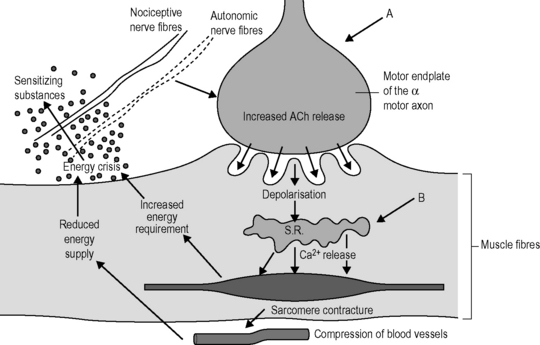

3 These pain syndromes are often concomitant and may interact with one another. 3 This must be differentiated from fibromyalgia syndrome, which involves multiple tender spots or tender points. 2 Myofascial pain syndrome is a common painful muscle disorder caused by myofascial trigger points. 1 Musculoskeletal disorders are the main cause of disability in the working-age population and are among the leading causes of disability in other age groups. population, have one or more chronic disorders of the musculoskeletal system. Trigger-point injection has been shown to be one of the most effective treatment modalities to inactivate trigger points and provide prompt relief of symptoms.Ībout 23 million persons, or 10 percent of the U.S. Various modalities, such as the Spray and Stretch technique, ultrasonography, manipulative therapy and injection, are used to inactivate trigger points. Palpation of the trigger point will elicit pain directly over the affected area and/or cause radiation of pain toward a zone of reference and a local twitch response. Palpation of a hypersensitive bundle or nodule of muscle fiber of harder than normal consistency is the physical finding typically associated with a trigger point. Trigger points may also manifest as tension headache, tinnitus, temporomandibular joint pain, decreased range of motion in the legs, and low back pain. These include muscles used to maintain body posture, such as those in the neck, shoulders, and pelvic girdle. Patients may have regional, persistent pain resulting in a decreased range of motion in the affected muscles. Acute trauma or repetitive microtrauma may lead to the development of stress on muscle fibers and the formation of trigger points. They produce pain locally and in a referred pattern and often accompany chronic musculoskeletal disorders. All DGSA courses have the Swiss EduQua quality certificate.Trigger points are discrete, focal, hyperirritable spots located in a taut band of skeletal muscle. Our courses are offered worldwide and in several languages. We place an emphasis on a high didactical level and profound knowledge and safety. With decades of clinical practice, teaching experience and continuous scientific research, the international DGSA instructor team passes on these efficient treatment techniques to other physiotherapists and medical doctors worldwide through high qulaity courses.
#Travell and simons trigger point manual#
Therapists who specialize in Dry Needling and Manual Trigger Point Therapy can be found on the DGSA website by clicking on find a therapist.

The objectives of Dry Needling and Manual Trigger Point Therapy are to resolve and enable the sustained relief of muscle pain and contraction as well as to resolve fascia adhesions, which may be contributing factors to back pain, neck pain, shoulder pain, tennis elbow, heel pain and other musculoskeletal and myofascial pain syndromes. It continues to set the relevant standards on this topic. Simons Academy, DGSA® has been one of the pioneers in the development and promotion of Dry Needling and Manual Trigger Point Therapy since 1995. To this day, he will remain for many people as a very unique and outstanding person.ĭry Needling and Manual Trigger Point Therapy Courses – A Better Quality of Life for Your Patients Simons continued to work on the 3rd edition of the Trigger Point Manual and on a book on climate change, until he passed away on April 5, 2010.
.jpg)
Simons and Travell are now internationally recognized as two of the pioneers in musculoskeletal medicine. He is considered to be one of the most highly respected scientists in this field internationally, and has received an honorary doctorate from Thomas Jefferson University in Philadelphia in 2005. Simons also has over 200 publications on trigger points and the treatment of chronic pain. This book was a breakthrough in the understanding of muscle pain, combining evidence with clinical practice.

Siegfried Mense, published "Muscle Pain: Understanding its Nature, Diagnosis and Treatment ". Their intense collaboration led to the publication of the "Trigger Point Manual" in 1983, which was the first compendium on the diagnosis and treatment of myofascial pain. Simons was so impressed by Travell and her findings, that he decided to work with her. In 1960, Dr Janet Travell MD, held a lecture on myofascial pain and trigger points at the Air Force School of Aerospace Medicine. Simons later worked for the Veterans Administration, where he developed research programs in physical medicine and rehabilitation.


 0 kommentar(er)
0 kommentar(er)
